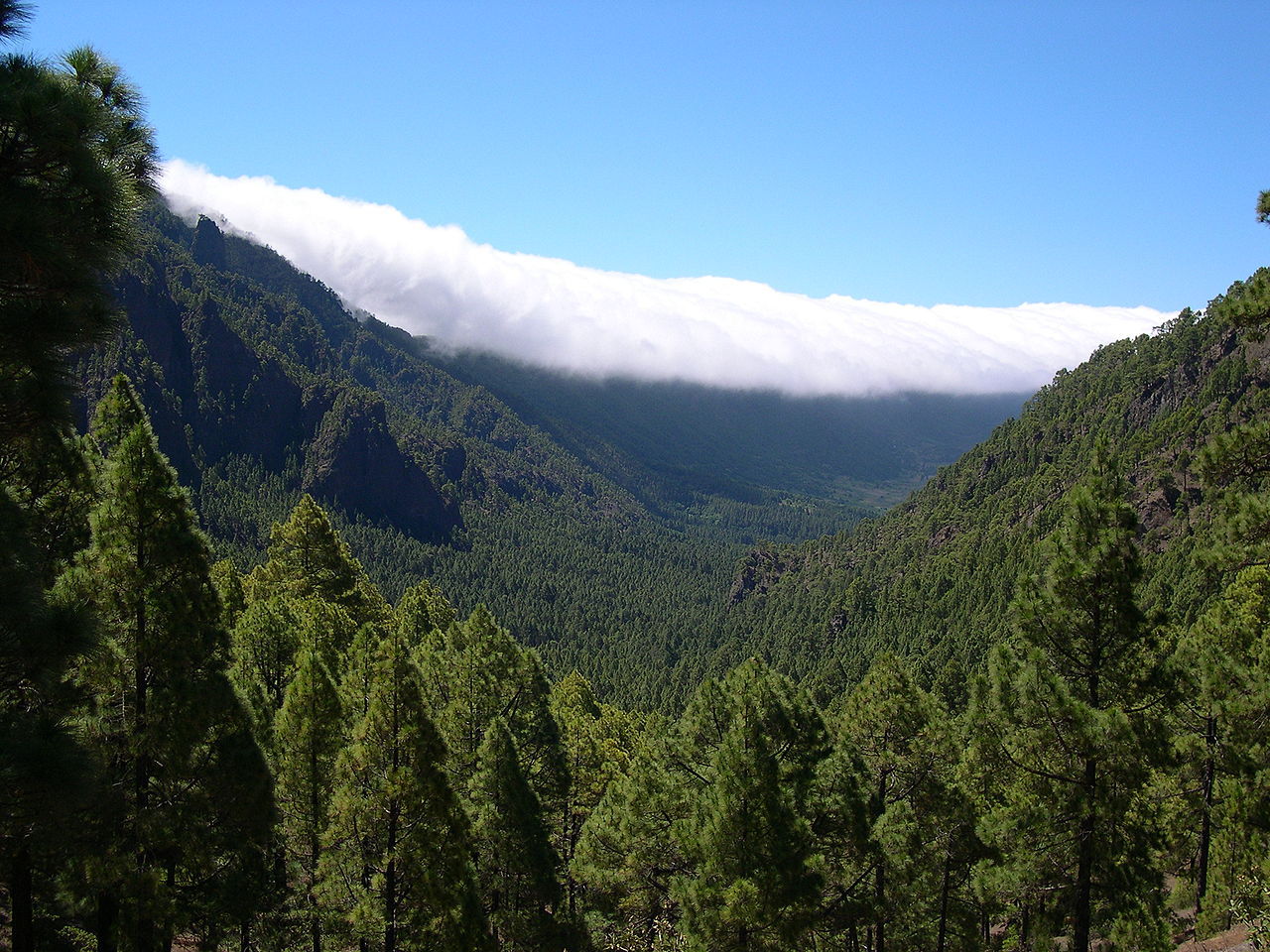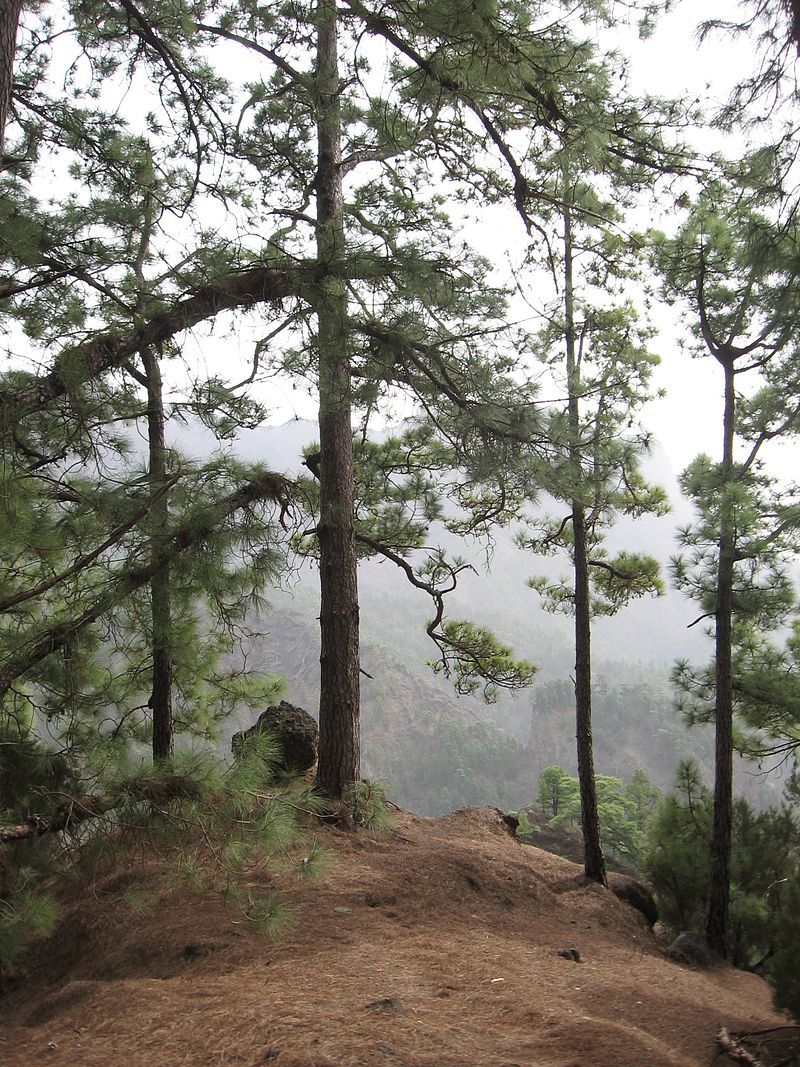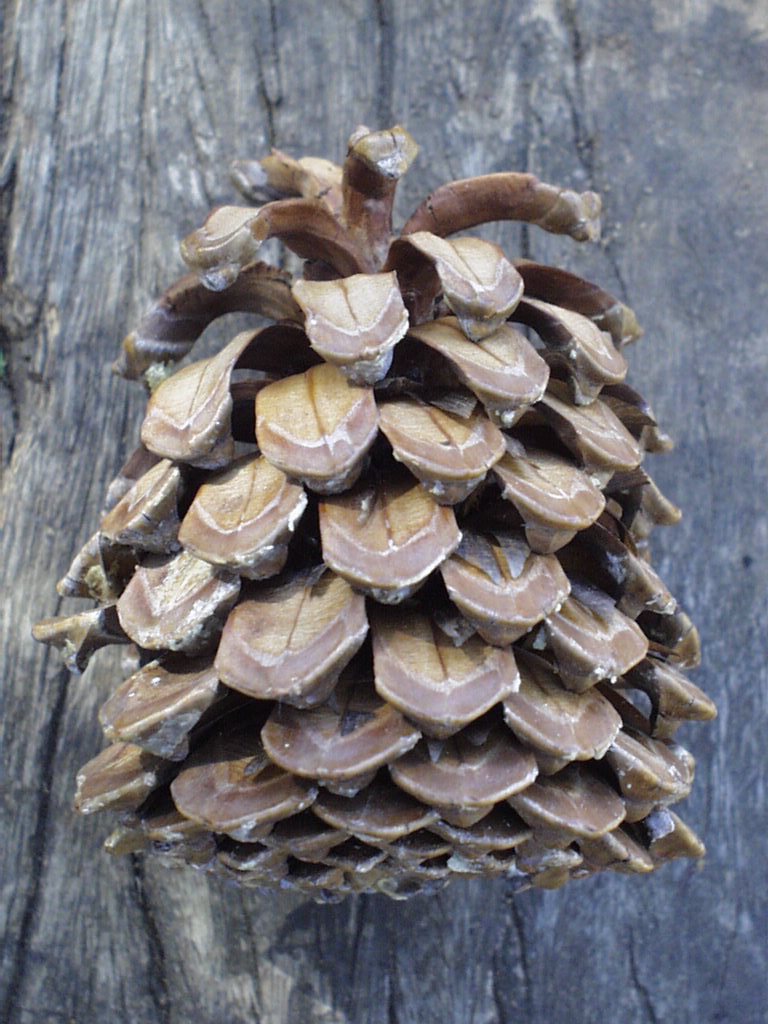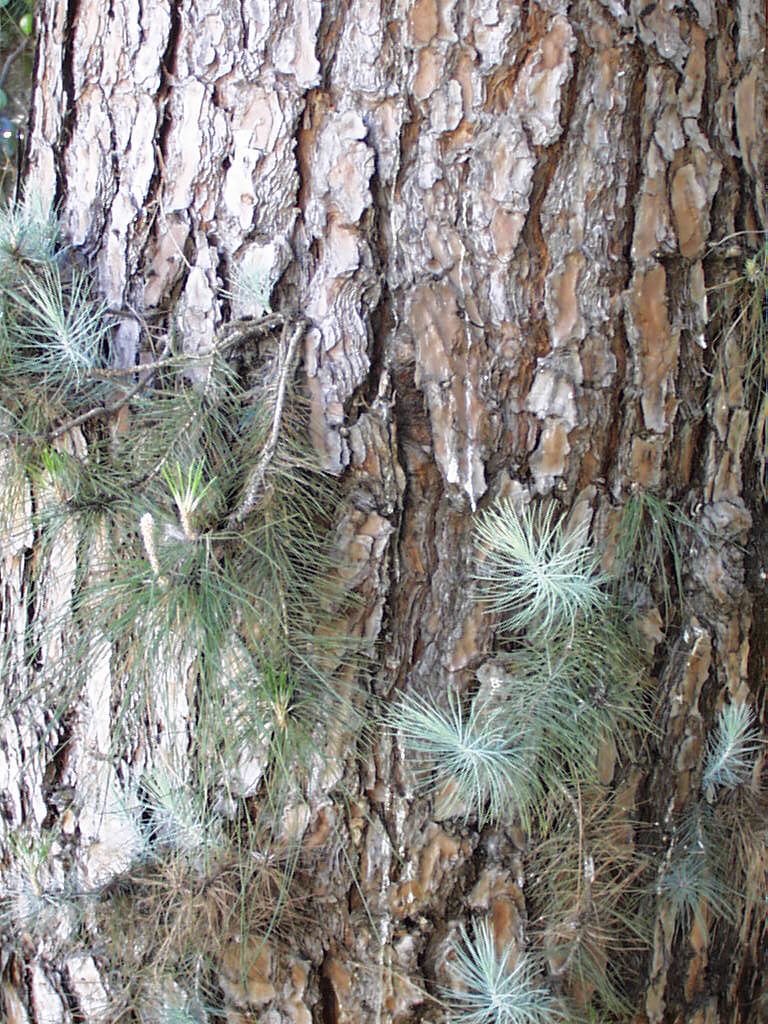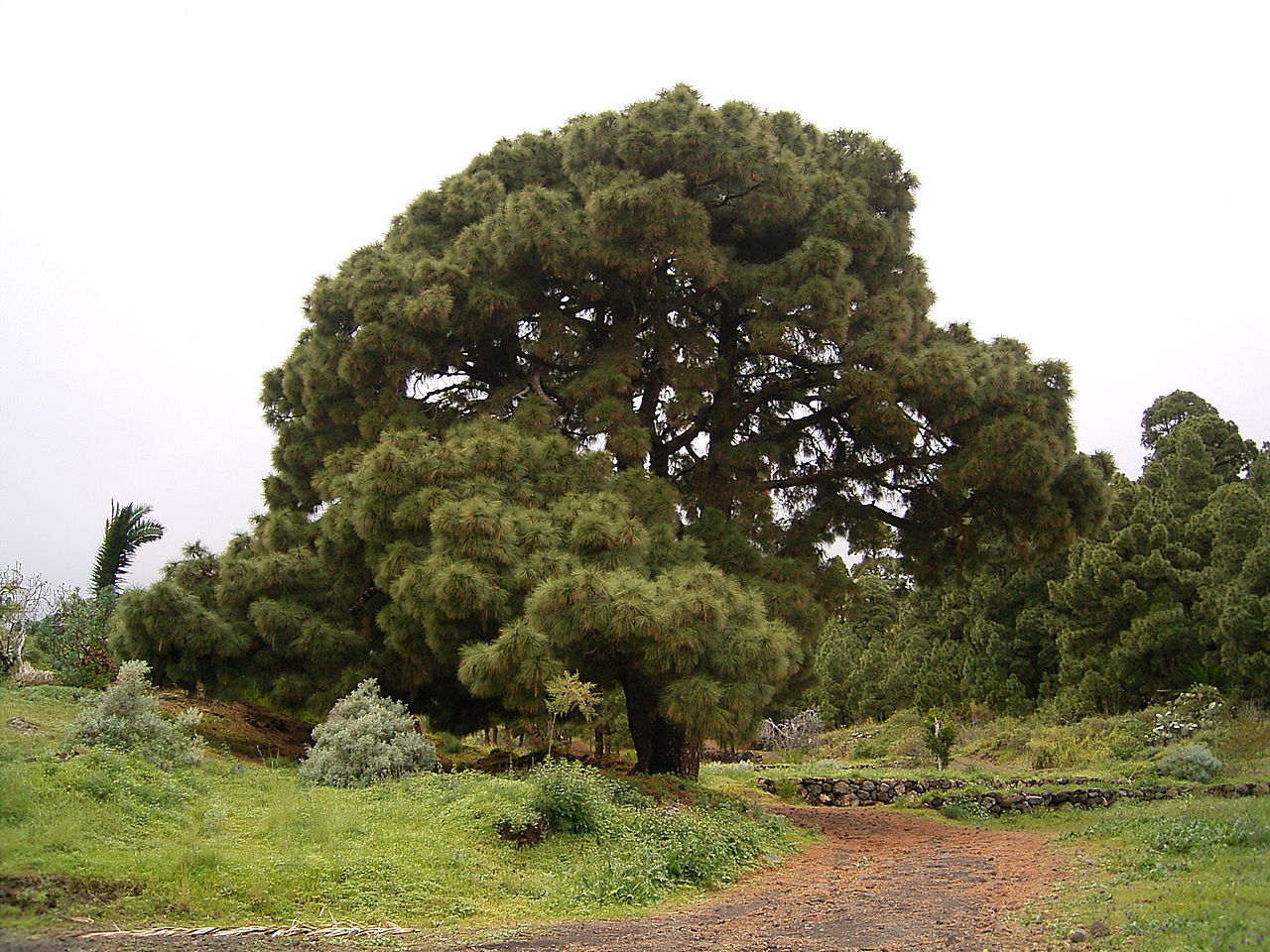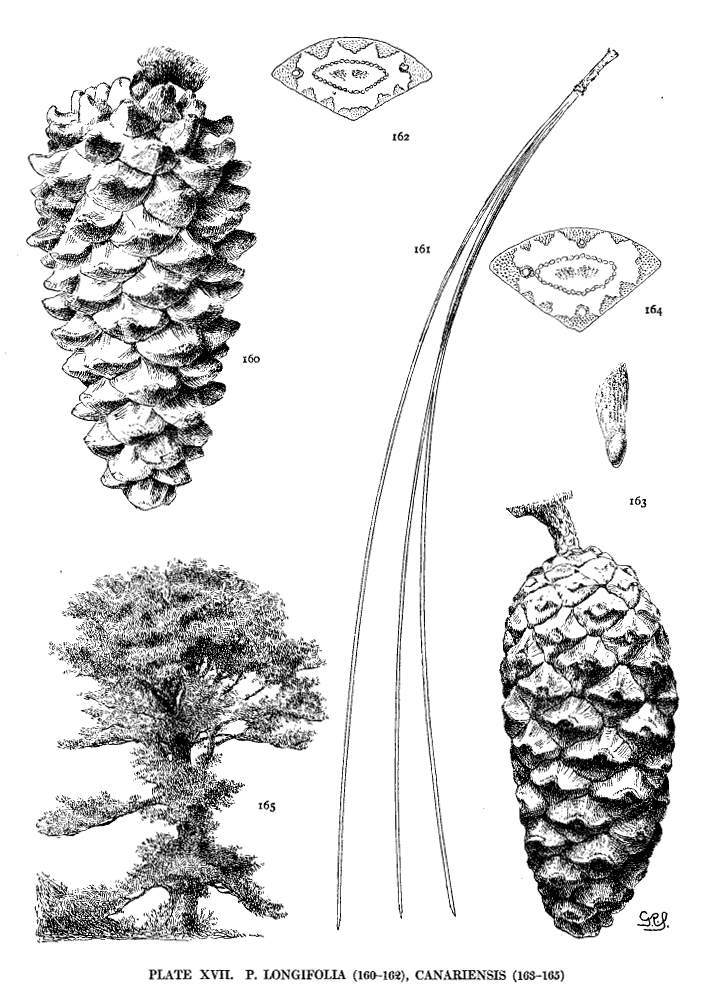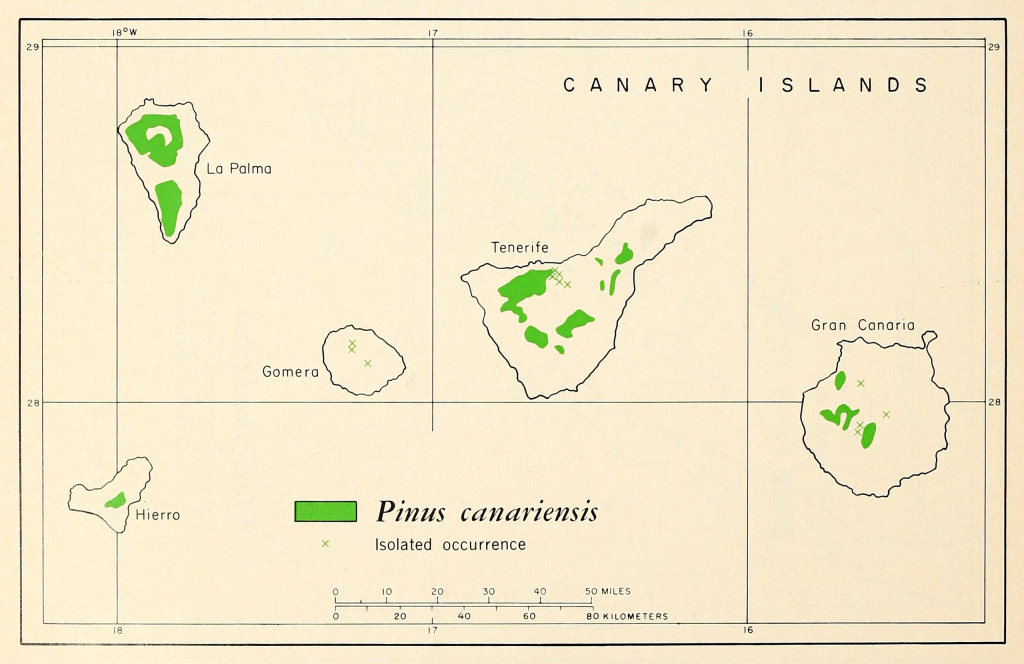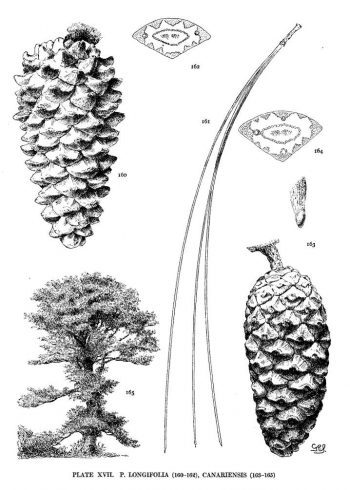
subgenus Pinus, section Pinus, subsection Pinaster (Mayr ex Koehne)
Pinus canariensis, first described in in 1825 by Robert Sweet (1783-1835) ex Curt Polycarp Joachim Sprengel (1766-1833) is commonly known as Canary Island Pine, as well as Pino canario, or pino de Canarias in the Spanish language. The epithet canariensis refers to the Canary Islands.
Ethnobotany. The species is of vital importance to the Canary Islands in gathering water. It grows in the cloud forest belt, where annual rainfall is typically around 20 inches (50 cm). Under the trees, this increases to 80 inches (200 cm) with fog drip off the leaves. This fourfold increase in precipitation supplies the irrigation water essential for the Islands' economy.
The fallen dead leaves used to be extensively used as packaging material for bananas exported from the Canary Islands. The large glossy and rich-brown colored cones are among the best in the genus for use as Christmas ornaments, but are not currently utilized extensively for this.
It is widely planted as an ornamental and, more locally, as a plantation species. In Australia and South Africa it has escaped cultivation and is actively invading (i.e., naturally regenerating) in native habitats of mallee shrubland and heath (in Western Australia) and fynbos and forest (in South Africa).
Description. Canary Island pine is an evergreen coniferous species of tree that grows to mature heights of 125 feet (40 m), occasionally to 200 feet (60 m), with a straight stem and a usually open crown of regular, candelabra-like upswept branches. Its overall structure is narrowly conic when young, later widening to broadly ovoid-conic, finally becoming irregular and dense with age.
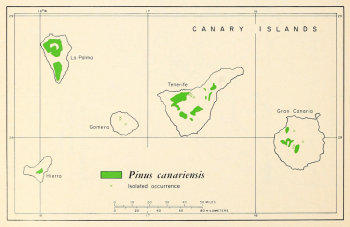
Distribution. This species is native to the western Canary Islands of Gran Canaria, Tenerife, La Palma, Hierro and Gomera (west of north Africa), an area of sub-humid Mediterranean climate. Predominant substrate is volcanic (of necessity, as the Canary Islands are volcanoes), growing at elevations of 2000 to 6,600 feet (600 - 2000 m) above sea level (varying with aspect). The tree forms distinct belts of sparse woodland. Forests in the northern cloud belt of Tenerife are much denser, with closed canopy, while those in the drier south and west are open, with widely spaced trees. It is a sub-tropical species unable to survive the winter frosts of temperate climates, which also restrict its ascent on the mountains of the Canary Islands.
Hardy to USDA Zone 9 - cold hardiness limit between 20° and 30°F (-6.6° and -1.1°C).
